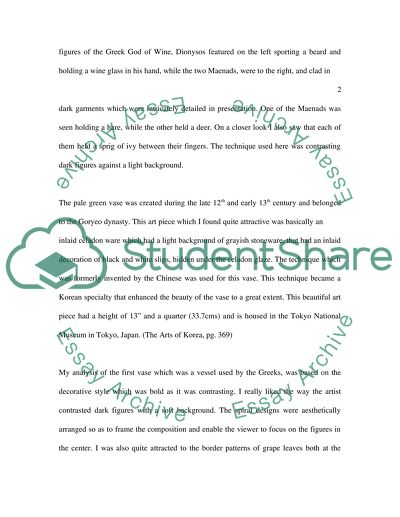Visual Arts Essay Example | Topics and Well Written Essays - 750 words. Retrieved from https://studentshare.org/visual-arts-film-studies/1474717-write-a-compare-and-contrast-essay
Visual Arts Essay Example | Topics and Well Written Essays - 750 Words. https://studentshare.org/visual-arts-film-studies/1474717-write-a-compare-and-contrast-essay.


